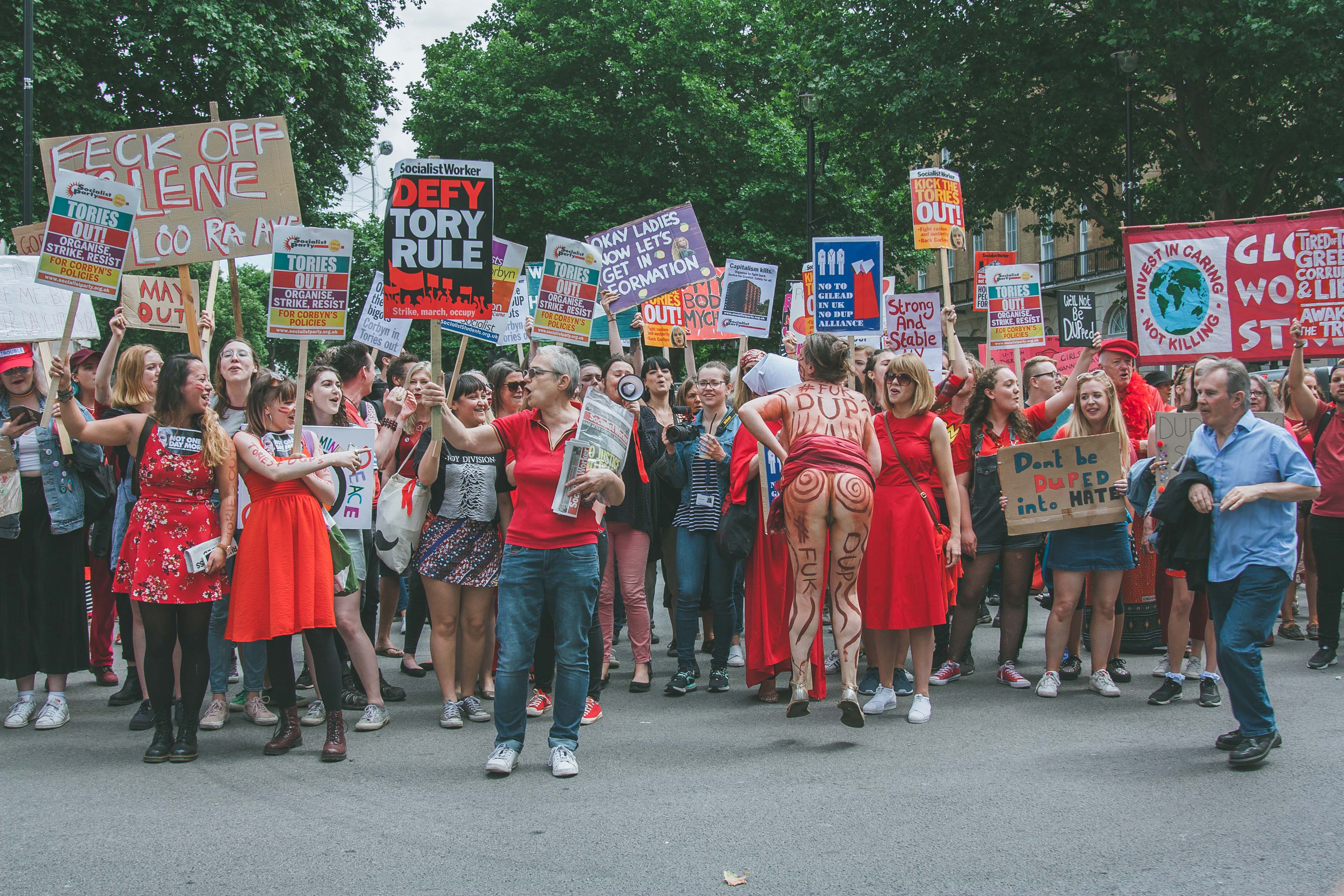Hundreds of protesters gather to demonstrate against the DUP-Tory coalition
- Text by Biju Belinky / Theo McInnes
- Photography by Theo McInnes

On Saturday, as the clock struck 12 in Parliament Square, hundreds of demonstrators clad in red gathered to make their voices heard against Prime Minister Theresa May’s planned deal with the Democratic Unionist Party (DUP) – the Northern Ireland party that opposes abortion and gay marriage – which has been signed this Monday morning.
The deal, which includes a £1.5 billion funding package for Northern Ireland, will see the 10 DUP MP’s backing May in key decisions, such as those relating to Brexit negotiations and security concerns. This new union between the parties was discussed after May failed to secure a majority in the last general election, meaning the Conservatives would be unable to pass legislation without support.
The DUP is known for being extremely right-wing, with its representatives repeatedly making homophobic remarks and being strongly against Northern Irish women’s right to choice and access to safe abortions.
“We are marching in support of the right to access abortion in NI [Northern Ireland] and against a Tory working agreement with no democratic mandate with a political group known to promote policy which restricts the rights of women and LGBT people and is known for links to far right politics.” Read the description of the Facebook event.
The protesters were clad in red as a way to represent the blood of the people whose lives were lost from being unable to access reproductive rights, as well as those who fell victim to austerity cuts, or died due to unsafe housing conditions, and those whose lives were lost as a result of the UK’s foreign policy.
Although the protest was originally called as a march against the then-unsigned deal, taking into consideration the Northern Irish party’s regressive policies towards women and LGBTQ people, the resulting gathering was much more a microcosm representation of the strong feelings of anger and disbelief that have been latent all over the UK ever since the results of the election were announced.
Between the hundreds of protesters, there were chants and placards demanding justice not only for the Northern Irish women without access to safe abortions and choice, but also for the residents of Grenfell and the rights of LGBTQ people. As protesters occupied the streets, surrounded by police, they chanted: “Racist, sexist, anti-gay, no DUP, no way.”










Enjoyed this article? Like Huck on Facebook or follow us on Twitter.
Latest on Huck

Tender, carefree portraits of young Ukrainians before the war
Diary of a Stolen Youth — On the day that a temporary ceasefire is announced, a new series from photographer Nastya Platinova looks back at Kyiv’s bubbling youth culture before Russia’s February 2022 full-scale invasion. It presents a visual window for young people into a possible future, as well as the past.
Written by: Hannah Bentley

Analogue Appreciation: 47SOUL
Dualism — In an ever more digital, online world, we ask our favourite artists about their most cherished pieces of physical culture. Today, it’s Palestinian shamstep pioneers 47SOUL.
Written by: 47SOUL

Meet the hair-raised radicals of Berlin’s noise punk scene
Powertool — In his new zine, George Nebieridze captures moments of loud rage and quiet intimacy of the German capital’s bands, while exploring the intersections between music, community and anti-establishment politics.
Written by: Miss Rosen

Amid tensions in Eastern Europe, young Latvians are reviving their country’s folk rhythms
Spaces Between the Beats — The Baltic nation’s ancient melodies have long been a symbol of resistance, but as Russia’s war with Ukraine rages on, new generations of singers and dancers are taking them to the mainstream.
Written by: Jack Styler

Uwade: “I was determined to transcend popular opinion”
What Made Me — In this series, we ask artists and rebels about the about the forces and experiences that shaped who they are. Today, it’s Nigerian-born, South Carolina-raised indie-soul singer Uwade.
Written by: Uwade

Inside the obscured, closeted habitats of Britain’s exotic pets
“I have a few animals...” — For his new series, photographer Jonty Clark went behind closed doors to meet rare animal owners, finding ethical grey areas and close bonds.
Written by: Hannah Bentley






